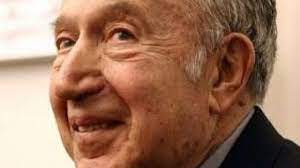Notes
“Property” As a Concept?
PROPERTY AND FREEDOM, by Richard Pipes (1999. Knopf Publishers, 317 pages)
When one examines property as tangible or intangible, one also has to ask is property a right or privilege, an entitlement, even possession outright as the author proposes at one point : But what actually is property? What makes up property? Other questions as well are answered by this text, including a political history of the idea of and the institution of property that examines England, France, Eastern Europe, and Western Europe in medieval times and more. Property in the 20th century is also illustrated insofar as the political values of communism and free enterprise are concerned, and then the world wars and the environmental, tax and entitlement characteristics of some property including business property in the age.
The approach the text takes is Euro – centric and emphasized European values and their effect on Western civilization and the institution, creation and appreciation and benefits of property. What is the meaning of this? Property, even today, and despite fluctuations and differences in valuation and up – and – down prices at auctions and other forms of property sale, is mostly tangible property – something one can see, touch and so on. There is also intangible property though the text does not go out of the way to examine how intangibles are created and valued. Many times, when thinking about property, observers expect to see a building or land, or some semblance of real estate; or large, high – value assets such as some forms of capital machinery. There is also property, and goods, of lesser value, lesser material substance, and these are of a different character. These forms of property all presently benefit the owner and hold benefits to the owner for the future. People, however, are not property, and treating people as such is against the values of society and the world at large.
The author in the book also spends considerable narrative linking freedoms, including civic and political freedoms, and the gains from ownership and individual liberty while liberty and property go hand in hand. When tangible property accrues to an owner without freedom and liberty, the author proposes, and a relationship with property first and freedom second is possible; the true nature of property begs elucidation and explanation as the status of property when freedom is abandoned or relegation is jeopardized. The author does examine the development of the idea of property since time immemorial, since before recorded history and while this part of the narrative is speculative, it is coherent, interesting and captivating, and places the importance of the value of and development of material property along with freedom as a primary driver in free and open society. Two societies are highlighted, the U.K. and Russia, in contrast to each other – a free Britain versus the value and status of property in a soviet system. The point of view as expressed is from the outside looking in, especially about the status and institution of property and goods in Russia which changed presumably after 1991. Property can already exist, such as land, or it can be developed or created – all different types of property assets are possible, and this text in many ways gives a political (nonetheless on the side of free and efficient markets, means of production and an efficient and free, however regulated, economic system. Why did the author write this text as an analysis of property and its characteristics when property is property and as much is known? Writing about property in Western Civilization, just the West, is a quite daunting and extremely detailed and pitfall – ridden process (see Fernand Braudel) given the differences between regions and areas within those, between nations and their individual counties and states – the notion of property once examined in its principles and ideas, then in its creation or development and substance can be ethereal. The effort to contrast the notion of property in the West with that in Eastern Europe, for instance, calls for even more historical illustration and detail; and this book was one of the author’s later books. The historical perspective of this narrative has more to do with what might be case studies in the factors that make up property and society’s adherence to the value and rights, institution and creation or development of property itself in the West. This process does seem to be illustrated as much more coherent and organized than “what is property?” in places like Russia and Eastern Europe. An outstanding study of a complex and varied, and substantial factor in the economic and political well – being of any society from the beginning of the ages to the present.

Dive into your interests
We'll recommend top publications based on the topics you select.
